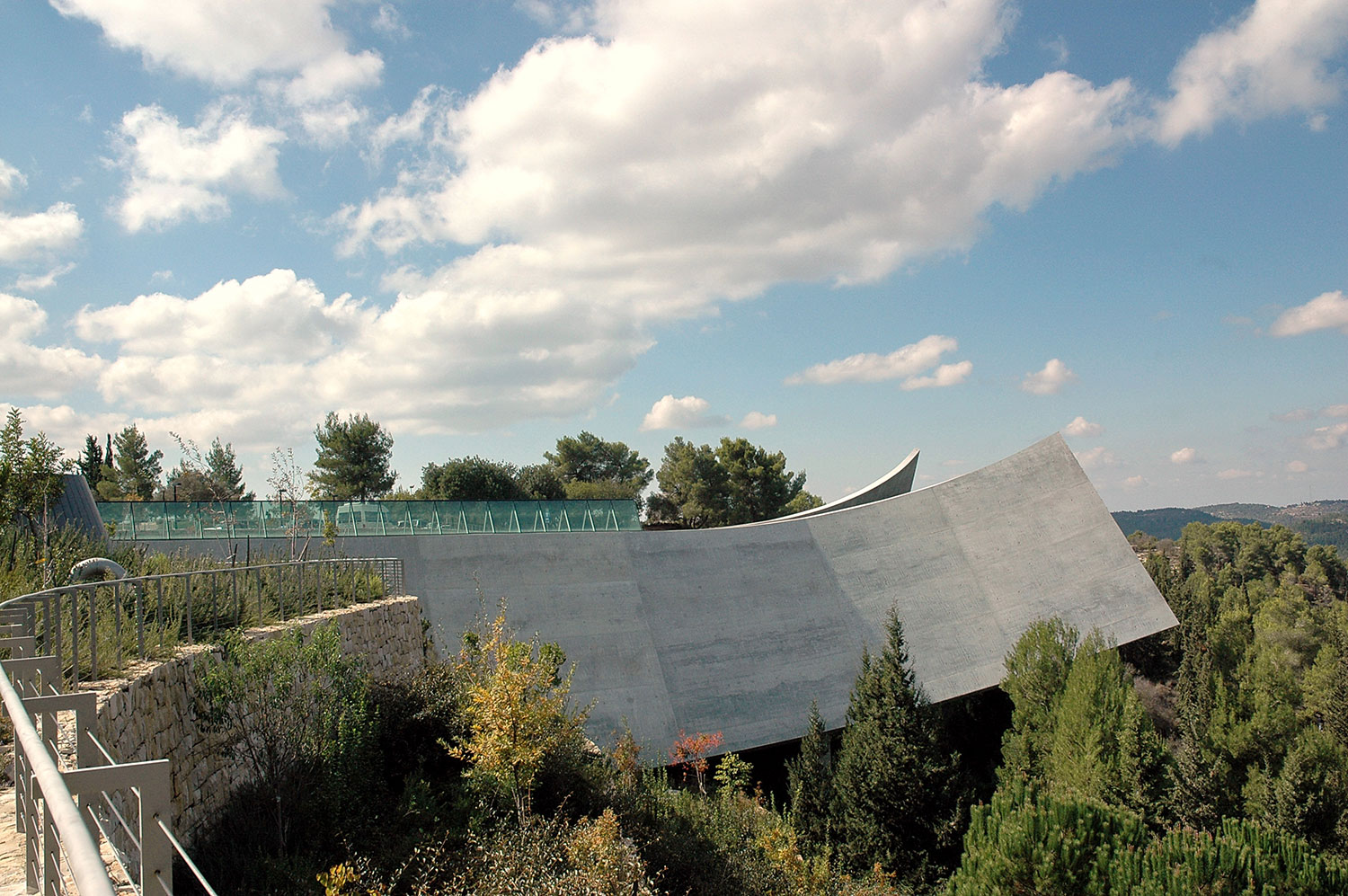
Exterior view of the Holocaust History Museum. Architect: Moshe Safdie
The Yad Vashem campus extends over 45 acres of forest and groves upon the hills of Jerusalem. Some 15 acres are irrigated flower gardens and trees – most of them planted in honor of the Righteous Among the Nations.
Through the initiative of Gadi Giladi, Director of the Maintenance Department at Yad Vashem, the flowers and trees now receive water discharged by the air conditioning system of the Museum Complex. This green-minded system, built by maintenance professionals, recycles 15,000 cubic meters of water from the air conditioning network every year. "Today, about a third of the manicured grounds at Yad Vashem are irrigated with recycled water," says Giladi. "In addition to the supreme importance of preserving water, this saves Yad Vashem some NIS 180,000 a year."
The Museum Complex, which includes the Holocaust History Museum, Holocaust Art Museum, Synagogue and Exhibitions Pavilion, is climate-controlled 24 hours a day, seven days a week, by an advanced cooling system that maintains constant temperature and humidity levels inside the museum halls throughout the year. The necessity of this is clearly dictated by the unique nature of the exhibits – personal effects, documents and artworks dating back to the Holocaust period. The temperature inside the museums is constant, regardless of the weather outside. This calls for a special air conditioning system, utilizing and discharging sizeable amounts of water. In the past, this water was simply wasted.
One of the most important processes which enabled Yad Vashem to recycle its cooling system water was the removal of lime scale, rendering water fit for irrigation. The process was closely supervised by agronomists and chemists, and helped achieve the necessary water quality.
At the heart of the new system are eight large tanks that collect water from the air-conditioning network and channel it toward the irrigation system. In an added measure of forward-thinking, the tanks double as water reserves for fire emergencies.









